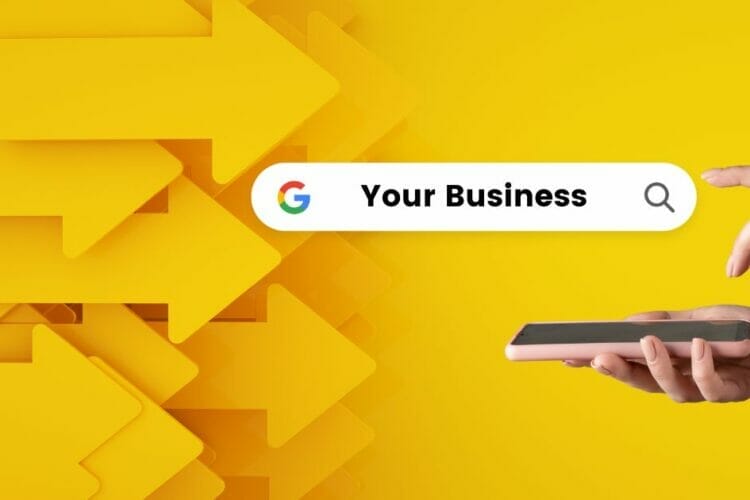Want something better for 2023?
No more big gaps in your booking calendar, and worries about cashflow and paying staff?
Changes in the market, time of year fluctuations, referral sources drying up, the next pandemic…. There’s always something around the corner.
The best idea is to stop focusing on what has or might happen, and here are 8 things you could be focusing on to better market your business for immediate, and future, sales.
- 1. Make the most of your existing database
- 2. Update your Google Business Profile
- 3. Start asking for Google reviews
- 4. Start Using a CRM
- 5. Improve your followup and onboarding processes
- 6. Review your messaging
- 7. Consider new marketing channels
- 8. Plan your marketing for the next quarter
- What’s the next step?
1. Make the most of your existing database
Contacts, past and existing clients, and leads that never did anything…. You’ve got email addresses and phone numbers so here is one of your cheapest marketing opportunities. In fact, there might even be enough here to keep you going without other activities (although you should always have other things going to be filling your funnel).
- Make a phone call – go old school. You can probably look at names in your database and pick out those that you know make sense to call – a collaboration opportunity, someone for whom the time has come for them to need more of what you do, or even someone you spoke to that the timing was not right for in the past.
- Send an email or text – an offer for now, or just teeing them up for something in the future, or just sharing great and useful info so you’re always the person they think of when something comes up for themselves or a referral opportunity.
- Just work out how you can stay top-of-mind – someone in your database could be the source of the next piece of business that comes in.
2. Update your Google Business Profile
Even you don’t get clients from local search, have a look at what comes up when people Google you. Your Google Business Profile has all of your details, including Google Reviews and offers if you want to use the posts function.
So at the bare minimum keeping your Google Business Profile updated is about maintaining credibility, but if I starts coming up in searches then it can be really valuable to you – just look at the amount of space those maps results take up in search results.
3. Start asking for Google reviews
This will not necessarily improve your ranking, but think about the indirect benefits:
- A strong review profile makes you stand out against competitors
- More clicks on yours versus a competitors may prompt a reordering or rankings
- You can display those reviews on your website (manual copy and paste or via a widget, or even just show something like “Over 50 5-star reviews on Google”)
4. Start Using a CRM
How important is this? Well there’s a reason we invested in the option to resell the CRM and automation platform in FocalContact!
Think about the ways you could be losing business right now:
- You don’t have a way to efficiently capture leads
- You don’t have an efficient process for lead followup
- You don’t have an easy way for leads to book time with you (whether they’re discovery calls or paid appointments)
- You don’t have an efficient process for following up sales calls and proposals.
- You’re not engaging with and upselling past clients.
- You’re not regularly going back to leads and enquiries that did not convert.
How do you plug these holes? With a system that keeps track of every contact, every piece of communication with them, lets you keep notes and manages appointments so the chances of an opportunity slipping through the cracks goes way down.
Just think if the average lifetime value of a client is $10K, then converting just one more per month from your existing traffic and lead flow would be an extra $120K per year coming into your business – for some businesses they might not even need extra leads if they can convert what they already have!
So if you’re not already using a CRM talk to us about FocalContact – that’s only part of what it does.
5. Improve your followup and onboarding processes
There is nothing worse than losing business that you should have closed, and poor communication is to blame for a lot of lost deals. So obviously off the back of the idea of using a CRM, start documenting and implementing standardised processes, and even automating them (do not even look at a CRM if it cannot handle workflow automations).
With the right systems in place you are leaving nothing to chance and maximising every opportunity, e.g. check out this video for how you can turn leads while they are in the moment into appointments in under 5 minutes on autopilot
6. Review your messaging
This comes with understanding who your ideal client(s) is – sometimes this evolves over time so your messaging needs to adapt as well.
By keeping your messaging on-point you’re giving yourself the best chance to attract the clients that are the best fit for you, because people with a brain tumour are not looking for a GP, they’re looking for a neurosurgeon.
Know exactly the problems you’re ideal clients are facing and let them know you have the best solution, you are the best person for the job because you have helped people just like them before, and you know exactly what a successful outcome for them looks like….
Note: Great messaging does not happen unless you’re addressing a very particular client avatar. If you have more than one ideal client avatar, think about how you are going to get the exact message in front of each:
- Run dedicated marketing campaigns that direct them to the most relevant, on-message page on your website.
- Use your website’s home page as a gateway page that funnels different client avatars to different pages on your website.
- You have the power to define your business, so take control in defining how your ideal clients will come to you.
7. Consider new marketing channels
There is no need to spread yourself thin here – you might want to think first in terms of those that will deliver the most immediate and best results in terms of revenue. More money in means more money to invest in bringing even more in – when that happens you can start thinking about investing in those marketing channels that will yield results in the long term.
Short term marketing channels and strategies
Want quick results then your best bet is probably paying for attention. There are two obvious channels for this.
Google Ads
Most typically, through search ads, this is suited to businesses where their market is problem and/or solution aware, i.e. they know what to search for. You set up a campaign, define the keywords and locations you want to target, create your ads, set your budgets and within a few hours your ads are approved and showing… and you’re only paying when someone clicks.
The other side of Google Ads that a lot of businesses are not aware of however acts like social ads. Just like Facebook, you can use the data collected by Google to target particular market audiences through Youtube, the Google Display Network and other Google-owned properties….
- Want to target someone that is giving all the indicators of starting a new business? It’s possible.
- Someone in the market for a new home loan that is in the top 20th percentile of household incomes? Possible.
- A father with a toddler? Possible.
Google has a lot of information on every single one of us, and its algorithms infer a lot from that – in many ways Google is a lot more powerful than Facebook for demographic targeting.
Facebook Ads, LinkedIn Ads & Other Social Ad Platforms
Obviously, they all eventually have a way to monetise their platforms. Every piece of information that is shared when creating an account
These platforms are pretty much demographic targeting orientated and lend themselves more to businesses trying to target audiences for which they are needing to build awareness in – either of the problems they solve, or the solutions they offer.
Social ads are targeting people when they are really not interested in you, so your offer and targeting needs to be dialled in to get results – it’s very easy to get low cost clicks, but no return on investment. Ideally have an offer that rewards fast action takers if you want immediate results, or if you okay with taking it a bit slower you may start by using great content to filter out those that are potentially in the market for what you have to offer, and then target those with something that is more promotional.
Long term results
Collaboration and Referral Sources
You can just about guarantee there is another business serving exactly the same type of clients without doing what you do. In fact your services may be so synergistic that it’s a no-brainer that your clients could probably benefit from the other business’ services.
Here’s what a good friend recently had to say about collaboration and connection/networking, and he’s an accountant not a “marketer” pushing an idea 🙂
Working with other businesses to collaborate and/or send referrals to each other is by no means a new idea, but it does require a high degree of trust (they need to know you will deliver for their clients), so don’t expect this to pay off overnight – they may already have a strong relationship with someone that does what you do.
Networking
Again this method is dependent on your ability to build relationships – just because you met someone at a networking event does not mean you’re the only person they know/have met offering what you do. Start a relationship by adding value and possibly setting a time to meet and get to know each other a bit better – no one likes that sleazy person that gives their business card to everyone they spoke o for 5 seconds.
Ideally before attending a network event see if you can find out who is going to be there, and work out who you want to connect with – it might be because they need you, or you see the potential for collaboration.
Check out the local business chamber and business networking groups. See what events are being promoted in Facebook and LinkedIn groups or Meetups – there are plenty of opportunities for networking if you spend just a little time looking, or ask a business acquaintance what networking hey do and tag along.
Content Marketing
Now this is a big topic to cover as a bite sized potion in an article that is not devoted to it. In a nutshell…. get on it!
Great content can fuel a big part of your marketing:
- It helps your SEO.
- It’s content to fill your social channels.
- You can feature it in emails (because I don’t think anyone would have wanted this almost 3000 word blog post hitting their inbox as the content of an email!).
- You can use it to filter your Facebook Ad audiences, i.e. someone engages with a piece of content then you can presume they are a bit warmer than a cold audience and potentially want what you’re offering (that relates to that piece of content).
- It gives people a taste of who you are and what you’re about.
If you’re wanting to start in on content marketing here’s what I would suggest:
- Identify your core content pillars/clusters – the broad categories you will write about that logically tie into your service offering.
- For each content pillar do a little bit of keyword research to see what people are wanting to know, and terms they are using.
- Use your keyword research and your knowledge of what clients have asked you in the past (or should have asked) and come up with a list of topics.
- Create a content production calendar alongside a content plan
Doing all of these in advance is going to make your life a whole lot easier when it comes to producing the content!
And don’t think you have to just write blog posts (let me tell you, I’m in the middle of writing this blog post and it definitely takes time!). Get comfortable with video – you’re not having to worry about grammar and punctuation, and you can get content out quick, and even strip the audio to create a podcast or transcribe it and turn it into an article, or break it down into bite size pieces for social posts.
Want a great tool for editing (and creating) content videos? Check out Descript.
SEO (Search Engine Optimisation)
This is definitely for the long term, and we definitely encourage any business to run Google Ads first. With Google Ads you get real data on what people are searching for, what they are clicking on and ultimately if it leads to a sale. You definitely don’t want to spend time and/or money getting to the point of being 6-12 months down the track and finally ranking and you find out that there are a tonne of people searching for something but none of them are willing to pay for what you have!
That being said definitely have a plan for SEO. Start out by getting all of your on-page SEO factors right and then move on to off-page SEO – the process of attaining links back to your website. Off-page SEO will require less work if you have your on-page right (both the technical aspects and the content on your site), and if you have started with a positive approach to content marketing it’s going to be easier getting other websites to link to you.
8. Plan your marketing for the next quarter
And finally, you know what they say, “If you fail to plan, you plan to fail.”
Start with what you’re hoping to achieve – it could be a revenue target or it could be some other metric.
For instance, if you know you want to make an extra $100,000 in the next quarter over what you would make otherwise this is very much a short term goal so SEO is not necessarily going to be the answer, and you need to consider what you are willing to invest to make that.
For example, if the profit margin on that $100,000 is $50,000, what is the absolute maximum that you are willing to invest into marketing to make that. If we were to decide that this is to be achieved using Google Ads then we need to consider all of the collateral and costs involved including possible landing page design and development (most businesses do not have landing pages that are suitable for driving conversions from Google Ads), costs for setting up and managing the ads and then the cost of ad spend.
Let’s say you say you are willing to spend $20,000 (of which $15,000 will be ad spend) to make the $50,000 profit based on the average value of 50 sales.
- So cost per acquisition you would be allowing for is up to $300 per sale.
- Let’s assume you convert 1 in 5 leads to a sale then cost per lead needs to stay under $60.
- Your landing page is dialled in and you’re figuring on converting 1 in 10 visits to a lead then you know your maximum cost per click across the campaign needs to say on average under $6.
Of course, the numbers will be different depending on the business you are in (for some industries an average CPC of $6 would be quite low), but you can see even with just one marketing initiative it is easily something that requires attention to make sure it performs.
But Google Ads may only be one marketing initiative you plan for this next quarter, so you need a plan for implementing your marketing, because we all know we get busy and without a solid plan it will never get done, or only just get half done.
And let’s think about those marketing initiatives that will come to fruition over the longer term, you definitely need short term plans to hit that longer term goal.
What’s the next step?
Put that marketing plan together and start implementing.
Do you have to do it alone? Of course not!
If you want to start with just a jump start to get you moving then our Maximum Marketing Leverage consult is a great starting point to go off and implement yourself or work out what you might outsource to an agency like ours
…. Or if you want ongoing assistance to do your own marketing check out our Marketing Mentor Program – you get to choose the level of support you need and get access to our library of 200 marketing templates and processes.




